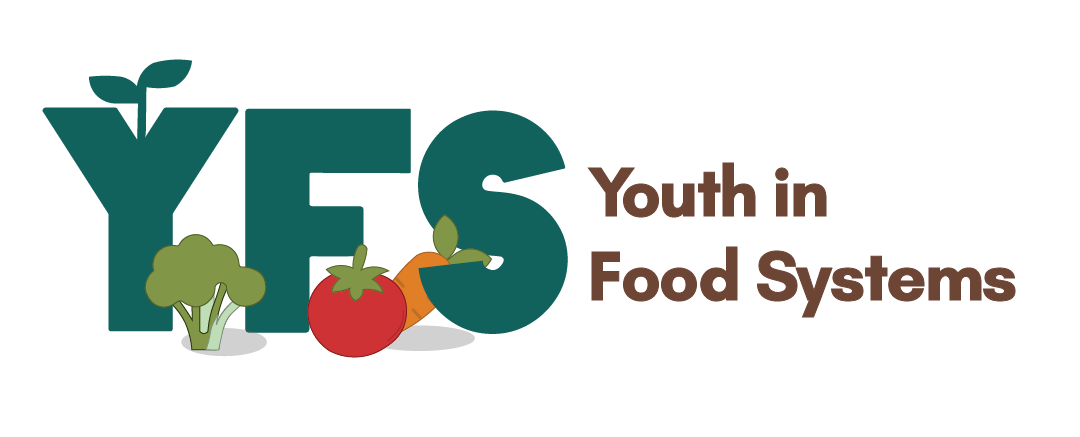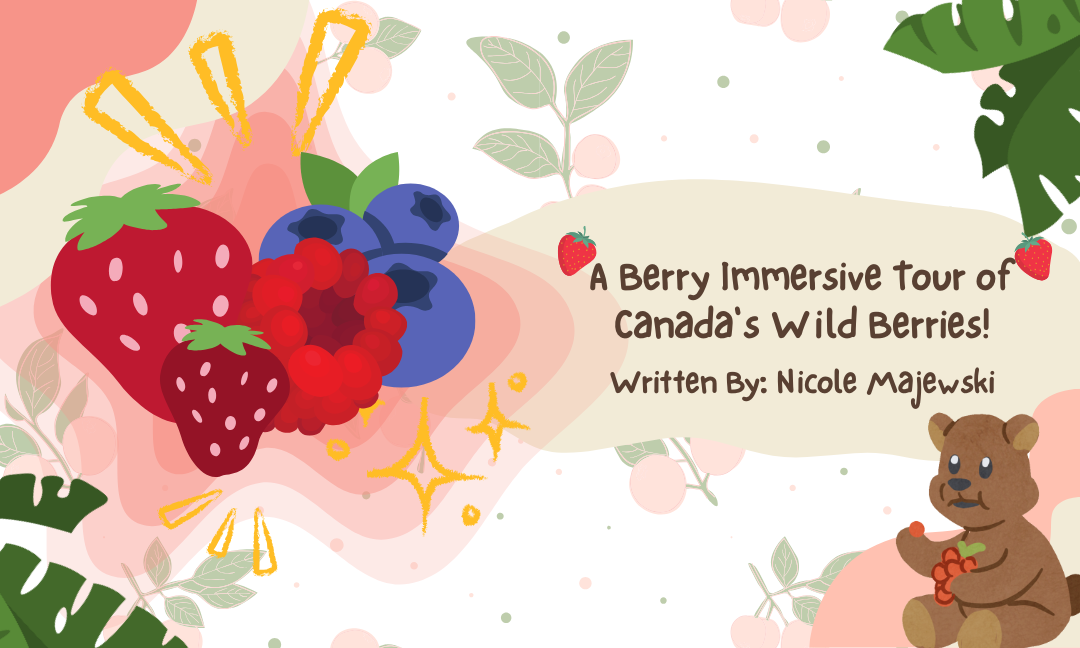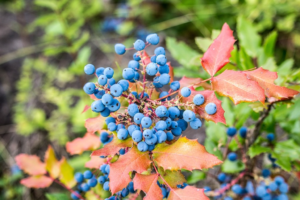Written by: Nicole Majewski
Edited by: Harnoor Chahal
Designed by: Suhana Shaik
Published by: Andrew Jackson
Canada is known for its natural beauty, but even Canadians don’t often realise the depth of this nation’s biodiversity. Specifically, berry biodiversity! Canada has over two hundred species of berries, and you’d be surprised at all the different kinds you can find just by stepping out into a nearby walking trail. So today, we’ll take you on a virtual tour of some of Canada’s most incredible wild berries.
Note: While all of the berries in this article are edible, you should always be cautious and verify the type of berry you’re foraging. And don’t forget to wash whatever you pick in warm water before eating!
Picture this…
To get the most out of this article, imagine you’re strolling through a quiet forest, luscious green shrubbery poking you from every direction. You can hear the crackling of dried leaves beneath your hiking boots, and birds chirp along to your rhythmic steps. Can you see it? Great! Now let’s take a look at all the Canadian berries you’re likely to find on your figurative nature walk…
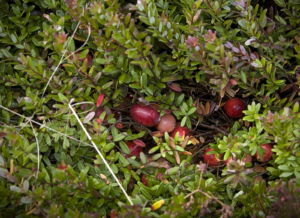
1. Cranberries
Excited at all the foraging potential of the landscape, your eyes flicker through the bushes, searching for anything out of the ordinary. Then, you spot it—bright red breaking through the green. Cranberries, hanging low like vines! These tart-tasting berries are iconic for their usage in cranberry juices and sauces. Whether or not you’re planning for Thanksgiving dinner, though, we’re lucky that they (and their many related species) can be found all across Canada!
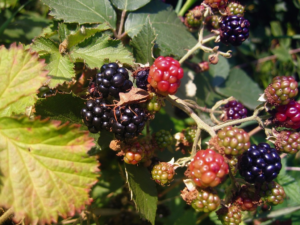
2. Blackberries
Stepping into a woodier area, all you can see is trees… until you catch the faintest glimpse of dark jewels nestled among the shadows! Over twelve species of these blue, purple, and red berries grow in Canada, and you can use them in everything from baked goods to salads to compotes.
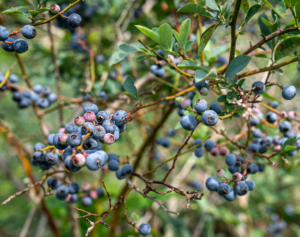 3. Blueberries
3. Blueberries
You stumble upon a colourful array of blues, blacks, and reds. After a moment, it clicks—they’re blueberries, because contrary to their name, these berries can come in a variety of hues! In Canada, there are eighteen species of these little shrubs and their related bilberries and huckleberries. The best part is their culinary versatility—there really isn’t much you can’t use them for!
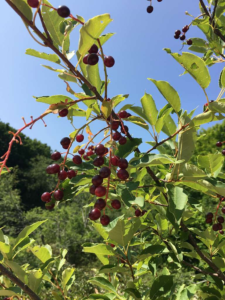
4. Chokecherries
The trees thin out the farther you walk, revealing an arrangement of small trees. Their branches reach out invitingly, offering long clusters of maroon chokecherries! Six types of these berries are native to Canada, and while they aren’t as well-known as blueberries, they’re famously used in chokecherry pudding.
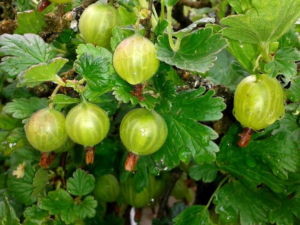
5. Gooseberries
Wading back into forest, you halt at a patch of prickly shrubs carrying what almost look like upside-down miniature pumpkins! These are some of the most common berries in Canada, with twelve species that can be found nearly everywhere. They’re known for their unique usage in everything from ice cream to salsa!
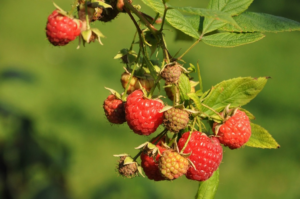
6. Raspberries
The grassy clearing chirps against the breeze as you leisurely circle a patch of soft raspberries. These berries, used in just about everything, are actually native to Canada! Now you know we aren’t just famous for maple syrup.
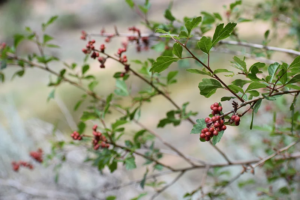
7. Salad berries
After a quick rest, you’re back on your way. It isn’t long until you come face-to-face with a beautiful evergreen shrub, housing countless clusters of round, dark carmine berries. You’re tempted to eat them fresh, but ultimately decide to save them for a delicious future smoothie!
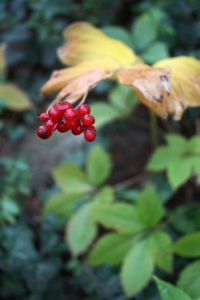
8. False solomon’s seal
Just as you’d become convinced you’d seen too many berries today, you notice a pyramid-shaped cluster of red dangling from a patch of wide leaves… you take a closer look, count… it must be at least forty—no, fifty—berries, all perfect as a refreshing tea flavour!
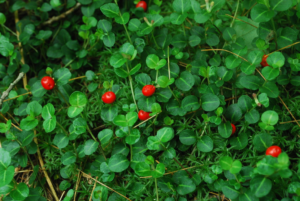
9. Partridgeberries
You approach the plant, curious. The berries look like apples poking out from between the leaves—they’re all on their own, small specks of red in isolation amidst the foliage. Looking closer, you notice that each berry has two holes, almost resembling eyes. They stare back at you. Shaking your head, you decide to leave these smiling berries alone! Not that you’d be missing much; these berries are actually tasteless, and with their eight seeds, they can be somewhat inconvenient to snack on…
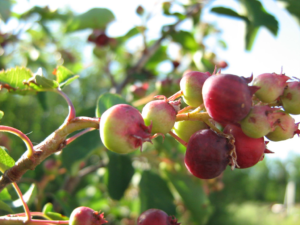
10. Saskatoon berries
On a tour of Canadian berries, you’re bound to encounter the species named after none other than Saskatoon itself! Harvested throughout July, these berries have historically been a key ingredient in pemmican. Nowadays, they’re used in just about everything.
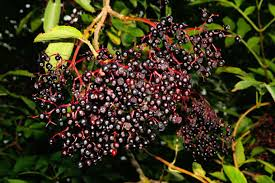
11. Common elderberries
It looks too good to be true, it’s a forager’s dream—infinite clusters of dozens of berries, ranging from shades of crimson to sangria to midnight black. These bittersweet delights are perfect for cocktails, syrups, or fritters!
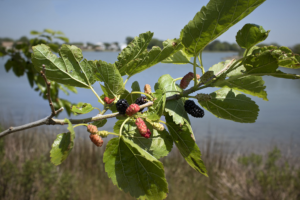
12. White mulberries
You saunter over to a sight straight out of a Welch’s package; giant blackberries in shades from orange to red to black. But these aren’t gummies or blackberries—they’re the sugary treasures known as mulberries; absolute staples in desserts and dessert toppings!
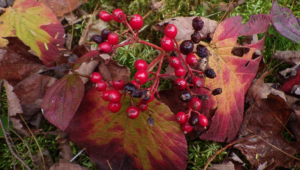
13. Hobblebush berries
You find yourself staring at the strangest presentation of wild berries you could’ve ever imagined, resembling an atom model straight from science class. But you find yourself smiling at how their chaotic clusters still somehow come together to form a spectacle of red and dark blue. You almost feel bad plucking some away for your jellies, jams, and purees.
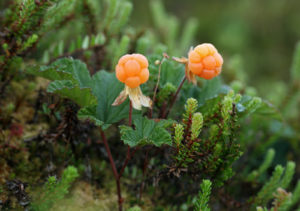
14. Cloudberries
Pushing through the greenery, you nearly trample a patch of ever-delicate orange! Known as “nature’s candies”, these golden berries are renowned for the sweetness they add to jams, jellies, pies, and tarts.
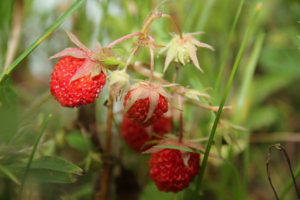
15. Strawberries
There’s no sweeter way to end off a nature hike, you think, as you approach the plump patch of strawberries at the centre of the meadow. Three species of these small red berries are native to Canada, making this the perfect country for dessert lovers.
That’s enough for now…
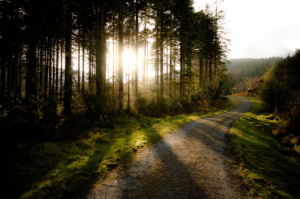
You collapse into rest, exhausted from a long day of hiking through Canada’s forests, fields, and everything in between. And while you’ve definitely earned a rest, keep in mind that this is just the tip of the iceberg—figuratively and literally! A real-life foraging adventure could take you across kilometres, or even entire provinces, to uncover such a diverse range of Canadian berries. Still, I hope this glimpse into the world of wild berries has sparked your curiosity and shown you the potential treasures that might be waiting just outside your door. So, with that, grab your basket, head into the wild, and happy berry hunting!
Works Cited
- Pxhere, https://pxhere.com/en/photo/1335383.
- Alfaro, Danilo. “What Are Cranberries?” The Spruce Eats, 24 November 2021, https://www.thespruceeats.com/what-are-cranberries-5199220. Accessed 9 April 2025.
- “almost ripe saskatoon berries.” Flickr, https://www.flickr.com/photos/creehawk/2668803562.
- Barclay, Lily. “Top 15 blackberry recipe ideas | Good Food.” BBC Good Food, https://www.bbcgoodfood.com/howto/guide/top-10-ways-serve-blackberries. Accessed 9 April 2025.
- “A bunch of blackberries growing on a bush. Blackberries berries fruits.” https://itoldya420.getarchive.net/amp/media/blackberries-berries-fruits-food-drink-c8671b.
- “A bunch of raspberries hanging from a tree. Raspberries fruit garden.” https://itoldya420.getarchive.net/amp/media/raspberries-fruit-garden-food-drink-50f9ba.
- Carson, Dale. “Native Cooking: High Plains Pudding Using Chokecherries.” ICT News, 26 August 2017, https://ictnews.org/archive/native-cooking-high-plains-pudding-using-chokecherries. Accessed 9 April 2025.
- “Chokecherry (Prunus virginiana L).” https://itoldya420.getarchive.net/amp/media/chokecherry-prunus-virginiana-l-4ca43d.
- “A close up of a bunch of ripe strawberries. Red strawberries wild strawberries.” https://boudewijnhuijgens.getarchive.net/amp/media/red-strawberries-wild-strawberries-food-drink-840079.
- Craigs, David. “Beams of light.” https://www.flickr.com/photos/cragproductions/13228890844/.
- Friend, Nina. “21 Chefs on Their Favorite Ways to Eat Cape Gooseberries.” Food & Wine, 8 July 2022, https://www.foodandwine.com/chefs/how-to-eat-gooseberries-chefs. Accessed 9 April 2025.
- “Gooseberries.” Stockvault, https://www.stockvault.net/photo/198933/zlib/trees.
- Maple Treasures. “The wild berries of Canada.” https://lestresorsderable.com/en/blog/category/the-wild-berries-of-canada.html?srsltid=AfmBOooFTJ8HM30–txBtXqdHqePezrSKk0OxmYgjiYoUcNP6uXxlnDS.
- Mayer, Joshua. “Partridge Berry (Mitchella repens).” Flickr, 7 July 2011, https://www.flickr.com/photos/wackybadger/5910767262.
- Mintenko, Anthony. “Saskatoon Berry.” The Canadian Encyclopedia, https://www.thecanadianencyclopedia.ca/en/article/saskatoon-berry. Accessed 9 April 2025.
- “Mulberry tree – black berries Hampton Virginia.” Flickr, https://www.flickr.com/photos/watts_photos/34716856676.
- National Parks Gallery. “False Solomon’s seal (Maianthemum racemosum), Frederick Law Olmsted National Historic Park, 2015.” Picryl, https://picryl.com/media/false-solomons-seal-maianthemum-racemosum-frederick-law-olmsted-national-historic-49bcc3.
- “Nearly All Stages of Hobblebush At Once.” Flickr, https://www.flickr.com/photos/catchesthelight/24599315928/.
- Northern Bushcraft. “Wild Edible Berries and Fruits of Ontario.” Northern Bushcraft, https://northernbushcraft.com/berries/ontario.php. Accessed 9 April 2025.
- “Northern Ontario Plant Database.” Northern Ontario Plant Database, https://northernontarioflora.ca/description.cfm?speciesid=1003129. Accessed 9 April 2025.
- “Public domain stock image. Wild blueberries blue berry.” Picryl, https://picryl.com/media/wild-blueberries-blue-berry-nature-landscapes-2c9476.
- Shallcross, Leslie. “Cloudberries | Cooperative Extension Service.” University of Alaska Fairbanks, https://www.uaf.edu/ces/publications/database/food/cloudberries.php. Accessed 12 April 2025.
- Stebnicki, Mark. Pexels, https://www.pexels.com/photo/a-blueberries-on-the-tree-8754403/.
- Trans Canada Trail. “Berry Picking Along the Trans Canada Trail.” 4 July 2024, https://tctrail.ca/stories/berry-picking-along-the-trans-canada-trail/.
- Turner, Nancy J. “Wild Berries in Canada.” The Canadian Encyclopedia, 18 August 2009, https://www.thecanadianencyclopedia.ca/en/article/wild-berries. Accessed 6 April 2025.
- Vassar, Anne. “Salal at Verlot, Mt. Baker-Snoqualmie National Forest.” Rawpixel, https://www.rawpixel.com/image/4075797/photo-image-plant-summer-food.
- “White Mulberries Information and Facts.” Specialty Produce, https://specialtyproduce.com/produce/White_Mulberries_8902.php. Accessed 9 April 2025.
- Wikimedia Commons. “File:Growing cranberries.jpg.” https://commons.wikimedia.org/wiki/File:Growing_cranberries.jpg.
- Wikimedia Commons. “File:Rabamurakad 2014.jpg.” https://commons.wikimedia.org/wiki/File:Rabamurakad_2014.jpg.
- Wilson, Carol. “How to pick and cook elderberries | Good Food.” BBC Good Food, 17 September 2017, https://www.bbcgoodfood.com/howto/guide/berry-bonanza. Accessed 9 April 2025.
